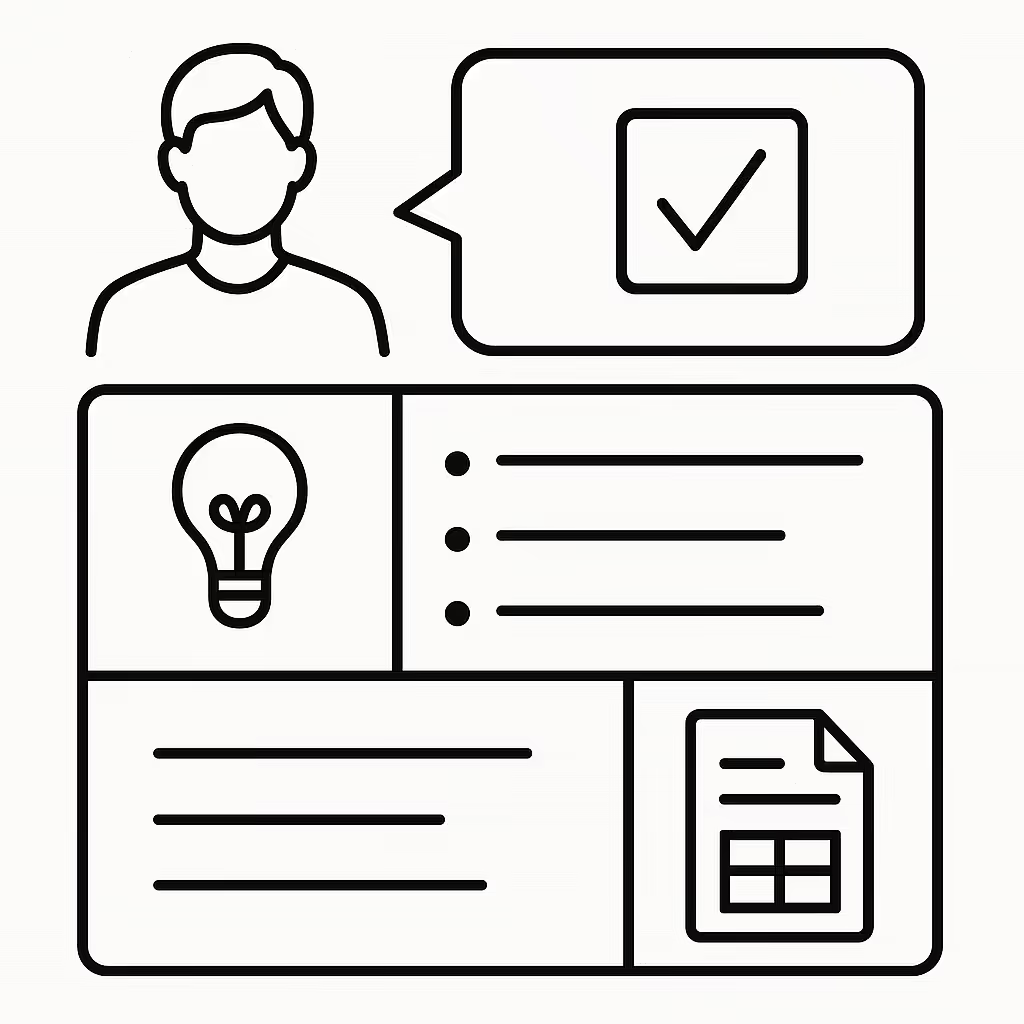
AI is no longer just a writing tool — it’s a thinking partner.
With the right prompt, you can simulate a product manager, marketing strategist, business coach, or even a technical lead.
It’s like hiring an expert on demand — without the delays or the back-and-forth.
In this guide, we’ll break down how you can use prompts to simulate real expert roles and get responses that are structured, smart, and surprisingly close to what a human expert would say.
Let’s get into it.
ALSO READ: What ChatGPT Model Is Worth Using

Simulating an expert role means telling the AI to act like a professional in a specific field — and giving it the right task to perform.
You’re not asking the AI to guess or pretend. You’re setting up a controlled scenario:
• Define who the AI should be
• Give it a problem to solve
• Set the tone, limits, and format
The result? Answers that reflect how real experts think, plan, and communicate — whether it’s a CEO drafting strategy or a UX designer reviewing feedback.
To get expert-level responses, your prompt needs structure.
Here’s a basic setup:
<system>
You are a [role] with experience in [domain].
Goal: Help the user [task or objective].
</system>
<user>
Here’s the context:
[Project details, background, or input]
</user>
This tells the AI exactly:
• Who it should act as
• What it needs to help with
• How it should think
The more clearly you frame the role and goal, the better the result.
Here’s what simulating a PM looks like in prompt format:
<system>
You are a senior product manager.
Goal: Review a new feature proposal and give roadmap prioritization advice.
</system>
<user>
Feature: “One-click export to PDF”
Users: SMBs using dashboards weekly
Need: Cut down manual exports
</user>
The AI responds like a PM would — weighing value, effort, urgency, and user impact.
You can tweak it to get backlog estimates, user flow feedback, or even a short spec draft.
You can also simulate a marketing strategist building out campaign ideas or messaging angles:
<system>
You are a SaaS marketing strategist.
Goal: Create a campaign concept for a new AI note-taking app.
</system>
<user>
Target: Busy remote professionals
Pain point: Forgetting meeting action items
</user>
The AI can generate:
• Campaign angles
• Tagline options
• Copy hooks
• Email or ad formats

Every solid expert simulation includes a few must-haves:
• A clear role — “Senior PM”, “Startup legal advisor”, “B2B content strategist”
• A defined task — “Review roadmap”, “Write onboarding email”, “Evaluate risk”
• Relevant context — Project name, goals, audience, product, etc.
• Output format — Bullets? Table? Memo? You decide.
Set the frame right — and the output will feel like it came from the real thing.
To get more realistic expert responses, try these tips:
• Be specific about the role — Instead of “you’re a designer,” say “you’re a senior UX designer at a fintech startup.”
• Mention tone or output style — Do you want a formal memo? A bullet summary? A creative brainstorm?
• Give real input — Add context like product features, pain points, or team goals.
• Ask for alternatives — Tell the AI to give 2–3 variations, not just one answer.
Small tweaks = big difference.

Simulating expert roles isn’t just for tech or marketing. Here’s where people use it daily:
• Tech: Product reviews, code checks, sprint planning
• Business: Ops strategies, pitch decks, finance breakdowns
• Marketing: Campaigns, content angles, funnel audits
• Legal/HR: Contract explanation, onboarding ideas
• Education: Lesson plans, exam prep, coaching tips
Wherever experts think, AI can simulate.
To keep your AI from going off-track, avoid these:
• Vague role setup — “Act like an expert” is too loose
• No context — The AI can’t help if it doesn’t know what’s going on
• Asking for too much at once — Break down your request into smaller steps
• Forgetting the output style — If you need a table or slide bullets, ask for it
Clarity in = quality out.
Here’s a reusable structure you can drop into any task:
<system>
You are a [senior/expert] [role].
Goal: Help the user [task]. Use [tone/style] and provide clear, useful output.
</system>
<user>
Project: [Brief background]
Target audience: [Who it's for]
Current challenge: [What's not working or unclear]
</user>
Customize it for marketers, PMs, engineers — whatever you need.
Some tasks need more than one expert. You can simulate a panel of roles by stacking prompts:
Example:
<system>
You are a team of 3: a PM, a UX designer, and a legal advisor.
Goal: Review this new AI feature for usability, roadmap impact, and privacy risks.
</system>
Now you get a multidimensional answer — each role brings its lens to the problem.
AI can do a lot — but it’s not a replacement for real-world expertise when:
• Legal risk is involved (contracts, lawsuits, compliance)
• Medical decisions need to be made
• Financial advice affects actual money flow
• Safety, ethics, or human emotion are at stake
Use AI to think faster — not to make final calls in areas that need licensed professionals.
Simulating expert roles with prompts gives you leverage — fast answers, better structure, and more clarity on your work.
It won’t replace real pros. But it will:
• Speed up planning
• Fill in knowledge gaps
• Help you sound more confident in any role
Master the structure, and you’ll unlock more value from AI — one prompt at a time.





